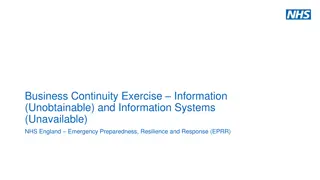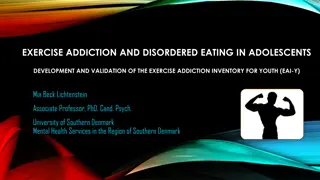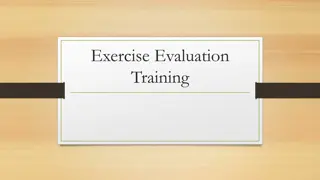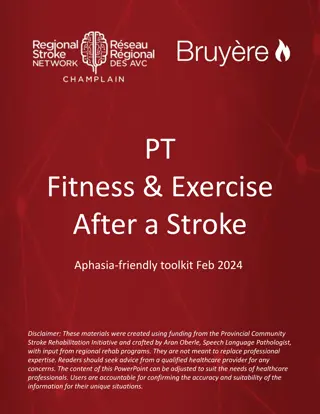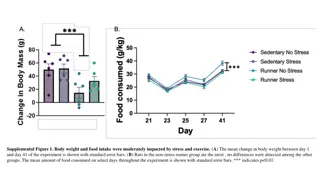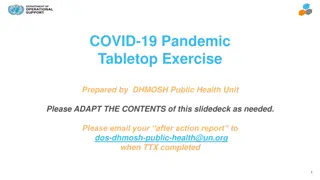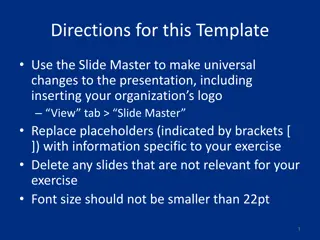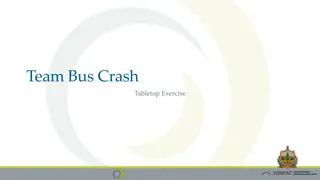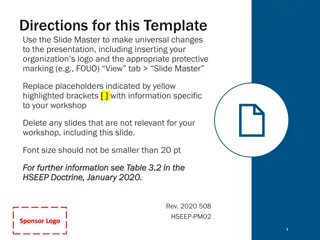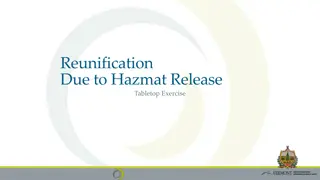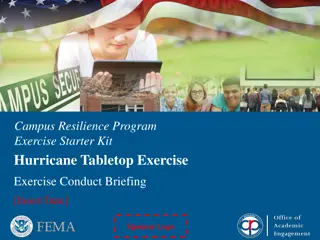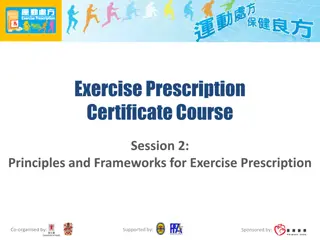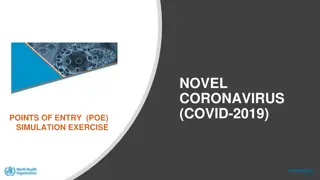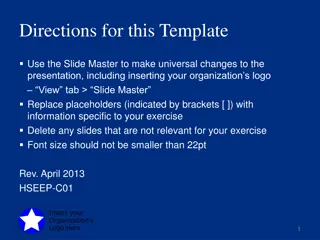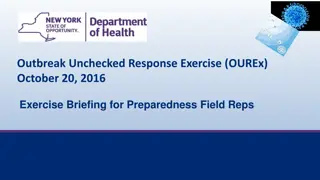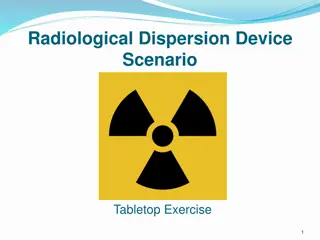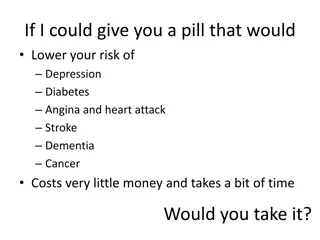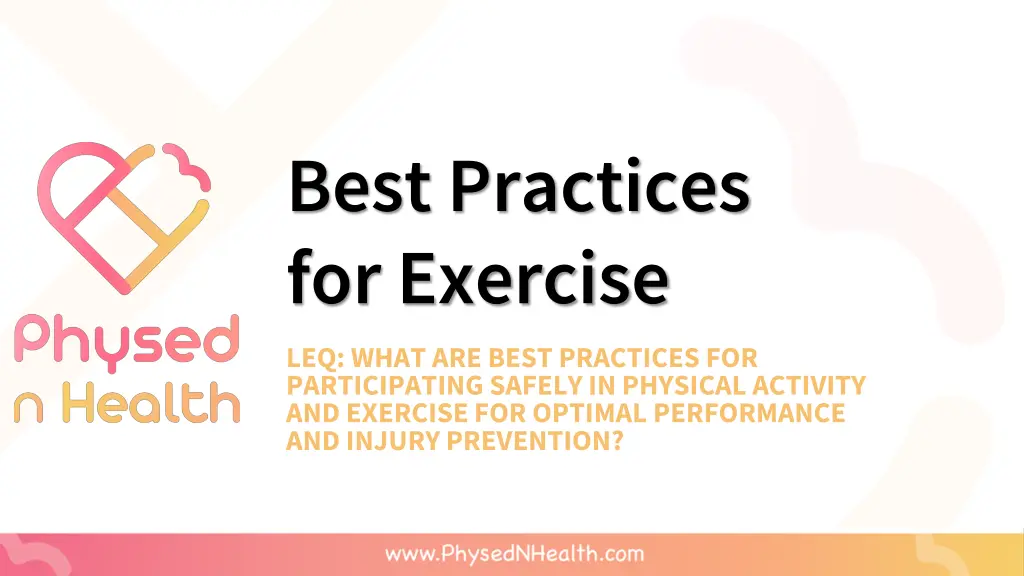
Optimal Performance & Injury Prevention: Exercise Best Practices
Learn the best practices for participating safely in physical activity and exercise to optimize performance and prevent injuries. Explore warm-up techniques, proper form, safety tips, and cool-down exercises for a holistic approach to fitness. Get insights on the importance of warm-up, cool-down, and maintaining proper form to enhance your fitness journey and achieve your goals.
Download Presentation

Please find below an Image/Link to download the presentation.
The content on the website is provided AS IS for your information and personal use only. It may not be sold, licensed, or shared on other websites without obtaining consent from the author. If you encounter any issues during the download, it is possible that the publisher has removed the file from their server.
You are allowed to download the files provided on this website for personal or commercial use, subject to the condition that they are used lawfully. All files are the property of their respective owners.
The content on the website is provided AS IS for your information and personal use only. It may not be sold, licensed, or shared on other websites without obtaining consent from the author.
E N D
Presentation Transcript
Best Practices for Exercise LEQ: WHAT ARE BEST PRACTICES FOR PARTICIPATING SAFELY IN PHYSICAL ACTIVITY AND EXERCISE FOR OPTIMAL PERFORMANCE AND INJURY PREVENTION?
CONTENT PREVIEW Warm-Up & Cool Down Proper Form & Technique Safety & Injury Prevention Outdoor Activity & Weather Conditions
WARM-UP Prepares the body and mind for exercise Elevates heart rate to provide muscles with oxygen Prepares muscles for movement and efficiency Prevents injury by safely increasing core and muscle temperature Perform exercises and movement patterns that mimic the activity Incorporate mobility exercises and dynamic stretches to improve or maintain range of motion
COOL DOWN Gradually lowers heart rate and breathing rate to avoid dizziness or fainting Helps reduce lactic acid in muscles easing delayed onset muscle soreness (DOMS) Disconnects the brain and body from a "fight or flight" response Reduces stress in the mind and body Improves confidence by reflecting on accomplishments, progress, effort, dedication, and hard work Opportunity to practice mindfulness and gratitude
In a group of 2-3, provide an example of an appropriate warm- up for an activity of your choice. Then provide an example of an appropriate cool down for an activity of your choice. LEARNING ASSESSMENT
PROPER FORM Proper form is necessary when participating in physical activity because it: Prevents injuries and accidents Makes your workout easier Allows you to target the right muscles Promotes better breathing Increases your performance Enables you to have full range of motion Maximizes your results, including improved muscle mass, strength, flexibility, and mobility
IMPROPER FORM Improper form puts strain on muscles and joints, which can lead to pain and injury It can slow your progress and delay training growth Wastes energy by overcompensating from inefficient movement
TIPS FOR PROPER FORM Devote time to learning proper form Reduce distractions while working out Be mindful of your movement Accept feedback from professionals Use a mirror to observe form Start with lower weights and less reps until you ve mastered exercise technique
In a group of 2-3, list the benefits of focusing on proper form and technique for a physical activity of your choice. LEARNING ASSESSMENT
LEARNING PROPER LOWER BODY FORM Common leg exercises include: Squat Lunge Deadlift Clean Hip Thruster Add variety to workouts by changing up movement Direction, pulse, hold, add knee, kick, leg lift or jump
In a group of 2-3, provide form cues to one of the leg exercises performed in class. What advice would you share with a friend new to lower body workouts? LEARNING ASSESSMENT
LEARNING PROPER UPPER BODY FORM Common upper body exercises include: Bicep Curls Hammer Curls Triceps Extension Triceps Kickback Chest Press Chest Fly Bent Over Row Upright Row Shoulder Press Front or Lateral Raise Rear Fly
In a group of 2-3, provide form cues to one of the upper body exercises performed in class. What advice would you share with a friend new to upper body workouts? LEARNING ASSESSMENT
LEARNING PROPER CORE FORM Common core exercises include: Crunches Dead Bugs Bicycles Sit Ups Russian Twist Wood Chops Plank Side Plank Bird Dog
In a group of 2-3, provide form cues to one of the core exercises performed in class. What advice would you share with a friend new to core workouts? LEARNING ASSESSMENT
WEATHER & EXERCISE Heat & Humidity Beat the heat workout early! Wear lightweight, light-colored clothes Stay hydrated Slow your pace/intensity Take longer breaks Listen to your body stop if you experience dizziness or nausea and get somewhere cool!
PHYSICAL ACTIVITY IN HEAT & HUMIDITY Hot and humid weather challenges your body's ability to cool itself. When the body cannot cool itself properly or too much fluid or salt is lost through dehydration or sweating, body temperature rises, increasing risk of a heat-related illness like cramps, heat exhaustion, or heat stroke.
THINK, PAIR, SHARE It s one of the first hot and humid days of summer with temperatures above 90 degrees. What advice would you give to a peer or relative training for an outdoor athletic event?
HEAT-RELATED CONDITIONS Heat Cramps: Symptoms: painful muscle cramps and spasms in legs or abdomen. First Aid: Apply firm pressure on cramping muscles or gently massage to relieve spasm. Give sips of water unless nauseous. Seek immediate medical attention if cramps last longer than 1 hour.
HEAT-RELATED CONDITIONS Heat Exhaustion: Symptoms: excessivesweating; weakness/fatigue; cool/ pale/clammy skin; fast/weak pulse; cramps; dizziness; nausea/vomiting; headache; fainting; dark urine; diarrhea First Aid: Move to a cooler environment like an air- conditioned room. Loosen clothing and apply cool towel, wet cloths, or sit in a cool bath. Offer small sips of water. Seek immediate medical attention if the person vomits, symptoms worsen, or last longer than 1 hour.
HEAT-RELATED CONDITIONS Heat Stroke: Symptoms: Throbbing headache, confusion, nausea, dizziness, body temperature above 103 F, hot, red, dry or damp skin, rapid and strong pulse, fainting, loss of consciousness. First Aid: Call 911 or get the victim to a hospital immediately. Dehydration is a life-threatening medical condition. If unconscious, administer CPR. Move to a cooler, air-conditioned environment. Reduce body temperature with cool cloths or bath. Do NOT give fluids. Monitor consciousness, breathing rate, & pulse.
THINK, PAIR, SHARE During an outdoor physical activity, a friend complains of dizziness, abdominal cramps, and fatigue. Your friend is sweating more than usual, and their skin is pale. What condition is impacting your friend? What first aid steps do you need to follow to ensure their health and safety?
WEATHER AND EXERCISE Cold Check temperature and wind chill Stay dry and protect head, hands, feet, and ears Drink plenty of water before, during, and after Listen to your body stop if you experience slurred speech or loss of coordination!
COLD WEATHER AND EXERCISE Dress in Layers Start with a thin layer of synthetic material, which draws sweat away from the body. Avoid cotton, which stays wet next to skin. Add a layer of fleece or wool for insulation. Top with a waterproof, breathable outer layer. Peel off layers when you begin to sweat. Outside temp will feel 10 degrees warmer while exercising with moderate to vigorous intensity. If you feel chilly at the start of the warmup, you re probably layered correctly. If you feel warm before your warmup, you're probably overdressed.
PHYSICAL ACTIVITY IN THE COLD Exercising in the cold is safe for almost everyone but talk to a health care professional first if you have certain conditions, such as asthma, heart problems or Raynaud's disease. Change clothes right away if they get damp or wet. Some days, it may be best to take a break or bring your workout indoors if the temperature dips below zero, the wind chill is extreme, or visibility is reduced by falling or blowing snow.
THINK, PAIR, SHARE Your friend s have invited you to participate in an outdoor physical activity. The temperature is 42 degrees with a wind chill of 35. How would you dress for the event?
COLD-RELATED CONDITIONS Frostbite: Can occur on exposed skin within 30 minutes or less during extremely cold weather. To protect the vital inner organs, the body cuts circulation to your extremities: feet, hands, nose, ears, or chin, which eventually freezes.
FROSTBITE Symptoms: Numbness, loss of feeling, stinging, or loss of color in extremities, redness, skin that feels firm or waxy First Aid: Get out of the cold and slowly warm the affected area with warm water or body heat. Do not use hot water or heat like a fireplace or heating pad since affected areas can be easily burned. Don't rub the area; it can damage the skin. If skin turns blue or gray, is very swollen, blistered or feels hard and numb even under the surface, go to a hospital as soon as possible.
COLD-RELATED CONDITIONS Hypothermia: Body temperature sinks below 95 degrees. Can occur in temps as warm as 60 degrees, particularly when water is involved (rain/sweat), or if outside for an extended time and not dressed properly. Low body temp affects the brain, making it challenging to think clearly or move well, impacting a person s awareness and ability to respond properly to the condition.
HYPOTHERMIA Signs and symptoms include intense shivering, slurred speech, loss of coordination, confusion, memory loss, drowsiness, and fatigue. Seek medical care immediately. Call 911, move the person inside to a heated location, and remove wet clothes. Do not rub or shake. Lie close to the person, covering both of you with thick blankets, warming the center of the body first. The hotter you get, the more warmth you give to the person. If unconscious, administer CPR.
THINK, PAIR, SHARE It s the first snowfall of the season. You and your friends are outside sledding. You start losing feeling in your fingers and toes and your nose is red and stinging. What condition are you at risk for? What first aid steps do you need to follow to ensure your health and safety?
LEQ: What are best practices for participating safely in physical activity and exercise for optimal performance and injury prevention? BEST PRACTICES FOR EXERCISE ASSESSMENT

